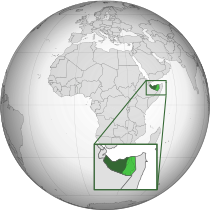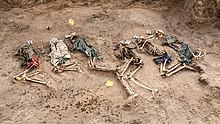
Introduction
Somaliland, officially the Republic of Somaliland, is an unrecognised country in the Horn of Africa. It is located in the southern coast of the Gulf of Aden and bordered by Djibouti to the northwest, Ethiopia to the south and west, and Somalia to the east. Its claimed territory has an area of 176,120 square kilometres (68,000 sq mi), with approximately 6.2 million people as of 2024. The capital and largest city is Hargeisa. Various Somali Muslim kingdoms were established in the area during the early Islamic period, including in the 14th to 15th centuries the Zeila-based Adal Sultanate. In the early modern period, successor states to the Adal Sultanate emerged, including the Isaaq Sultanate which was established in the middle of the 18th century. In the late 19th century, the United Kingdom signed agreements with various clans in the area, establishing the Somaliland Protectorate, which was formally granted independence by the United Kingdom as the State of Somaliland on 26 June 1960. Five days later, the State of Somaliland voluntarily united with the Trust Territory of Somalia (the former Italian Somalia) to form the Somali Republic. The union of the two states proved problematic early on, and in response to the harsh policies enacted by Somalia's Barre regime against the main clan family in Somaliland, the Isaaq, shortly after the conclusion of the disastrous Ogaden War, a 10-year war of independence concluded with the declaration of Somaliland's independence in 1991. The Government of Somaliland regards itself as the successor state to British Somaliland. Since 1991, the territory has been governed by democratically elected governments that seek international recognition as the government of the Republic of Somaliland. The central government maintains informal ties with some foreign governments, who have sent delegations to Hargeisa; Somaliland hosts representative offices from several countries, including Ethiopia and Taiwan. However, Somaliland's self-proclaimed independence has not been officially recognised by any UN member state or international organisation. It is the largest unrecognised state in the world by de facto controlled land area. It is a member of the Unrepresented Nations and Peoples Organization, an advocacy group whose members consist of indigenous peoples, minorities and unrecognised or occupied territories. Following the Las Anod conflict that emerged in 2022, Somaliland lost control of a significant portion of its eastern territory to pro-unionist forces who established the SSC-Khatumo administration. (Full article...) Selected article -The Isaaq genocide (Somali: Xasuuqii beesha Isaaq; Arabic: الإبادة الجماعية لقبيلة إسحاق), also known as the Hargeisa Holocaust, was the systematic, state-sponsored genocide of Isaaq civilians between 1987 and 1989 by the Somali Democratic Republic, under the dictatorship of Siad Barre, during the Somaliland War of Independence. The number of civilian deaths in this massacre is estimated to be between 50,000 and 100,000, according to various sources,[page needed][page needed] whilst local reports estimate the total civilian deaths to be upwards of 200,000 Isaaq civilians. The genocide, which escalated after the Somali National Movement (SNM)'s 1988 Northern Somalia offensive, also included the levelling and complete destruction of the second and third largest cities in the Somali Republic, Hargeisa (which was 90 percent destroyed) and Burao (70 percent destroyed), respectively, and had caused up to 500,000 Somalis of the region, primarily of the Isaaq clan, to flee their land and cross the border to Hartasheikh in Ethiopia as refugees in what was described as "one of the fastest and largest forced movements of people recorded in Africa", which resulted in the creation of the world's largest refugee camp then (1988), with another 400,000 being displaced. The scale of destruction led to Hargeisa being known as the 'Dresden of Africa'. The killings happened during the Somali Civil War and have been referred to as a "forgotten genocide". In the countryside, the persecution of Isaaq included the creation of a mechanised section of the Somali Armed Forces dubbed as Dabar Goynta Isaaqa (The Isaaq Exterminators) consisting entirely of non-Isaaqs (mainly Ogaden); this unit conducted a "systematic pattern of attacks against unarmed, civilian villages, watering points and grazing areas of northern Somalia (Somaliland), killing many of their residents and forcing survivors to flee for safety to remote areas". This resulted in entire villages being depopulated and towns getting plundered. Rape was also used as a weapon against Isaaqs. Human Rights Watch states that this unit, along with other branches of the military, were responsible for terrorising Isaaq nomads in the countryside. Dabar Goynta Isaaqa would later turn into a system of governance where local officials would put the most hard-line policies into effect against the local Isaaq population. The Somali government also planted one million land mines within Isaaq territory. (Full article...) Did you know
General images -The following are images from various Somaliland-related articles on Wikipedia.
Related portalsThings you can do
TopicsCategoriesAssociated WikimediaThe following Wikimedia Foundation sister projects provide more on this subject:
Somaliland newsSourcesDiscover Wikipedia using portals
| ||||




































